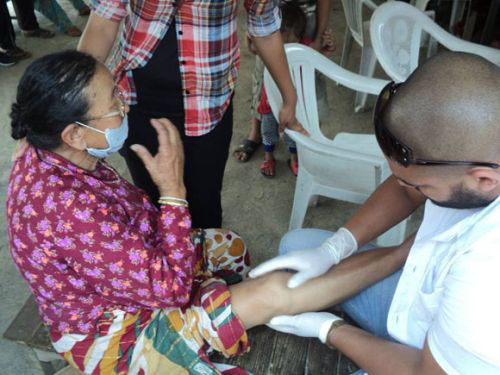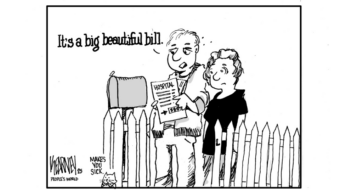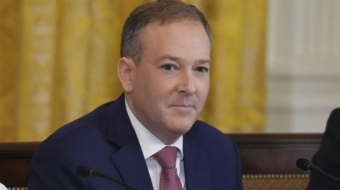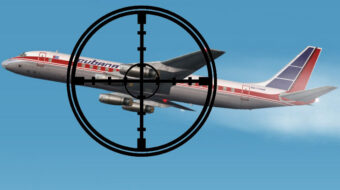
A new chapter in the story of Cuba’s outreach to the peoples of the world began on May 12, 2015 with the arrival in Katmandu, Nepal of 49 Cuban health care workers – 25 are physicians – to care for wounded and distraught victims of the earthquake that hit the region on April 25.
They are members of “Brigade 41” of the Henry Reeve Brigade which has long experience in providing emergency, follow-up, and rehabilitative care in situations of natural disaster or epidemics. This was the 41st time since its formation in 2005 that Brigade surgeons, medical doctors, nurses, and technicians have gone abroad to 24 different countries where these conditions were playing out.
A native of Brooklyn, New York, Henry Reeve, in 1869, joined rebels in Cuba fighting for independence from Spain. He was 27 years old and a brigadier general when died in battle in 1876.
Upon their arrival the Cubans set up a fully-equipped emergency hospital in Katmandu’s Kirtipur district next to a Nepalese medical center, where 50 recovery beds were made available for their patients. They assembled translators, met with Nepalese health officials, and coordinated efforts with World Health Organization representatives and other international teams.
Encouraged by Katmandu’s Cuba solidarity organization, a contingent of the Brigade moved to the hard-hit Bhaktapur district where over the five initial hours the Cubans saw 512 patients, mostly for triage, minor injuries, and pre-existing illnesses.
A strong secondary earthquake on the day the Cubans arrived added to the flood of injured people needing care; many required surgery.
The Henry Reeve Brigade was hardly the only international group caring for earthquake victims in Nepal. Others teams include those of the Doctors without Borders organization, and several physician-nurse groups from U.S. and Canadian hospitals. Included in the U.S. aid package are the services of 120 U.S. Marines, four Osprey tilt-rotor aircraft, and one helicopter.
Only the Cuban health workers, however, were there as the result of national planning, budgeting, and experience extending over decades. Prior to formation of Henry Reeve Brigade and beginning in 1960, 36 emergency medical units had already provided care in 24 countries.
Cuban Health Minister Roberto Morales bade farewell on April 9 to 15 medical specialists leaving to deal with floods in Chile. He recalled that he himself, in 1960, had joined Cuba’s first international medical relief team, which also went to Chile, that time in response to a serious earthquake.
Three Brigade missions are particularly noteworthy. Within two weeks of an earthquake in Pakistan that killed 250,000 people in 2005, over 3,000 Cuban medical personnel were in the snow and mountains working out of 32 field hospitals to care for the injured. They stayed for six months.
Cuban doctors were the first to arrive in Haiti to provide medical relief after the massive earthquake there in 2010. They were joined by hundreds of Cuban doctors already working in Haiti and medical students from Haiti and other countries who had been studying in Cuba. Cuban doctors have taken the lead in combating the post-earthquake cholera epidemic still ravaging Haiti.
And on May 22 the last of the 256 Henry Reeve Brigade physicians returned to Cuba from West Africa where for six months they had been treating Ebola patients. As the People’s World reported recently, the Annual Conference of Norwegian Trade Unions on Feb. 4 nominated the Henry Reeve Brigade to receive the Noble Peace Prize for its work against the epidemic.
Canadian Professor John Kirk, an expert on Cuba’s medical internationalism, supports the nomination. He cites Operation Miracle, the Cuban -Venezuelan program that has surgically restored sight to more than three million people, Cuba’s medical care for thousands of children sickened by the 1986 Chernobyl nuclear plant disaster, and the Latin American School of Medicine (ELAM) that in ten years has graduated over 20,000 physicians from 84 countries.
Kirk could have mentioned 124,000 Cuban health professionals who’ve worked in over 154 countries since 1960 and also 50,000 of them working in 67 countries now.
Argentinian ELAM graduate Emiliano Mariscal in 2011 reported on his work in Haiti as a medical student after the earthquake there. He discusses the future role ELAM graduates might play in international medical outreach and elaborates upon principles motivating such efforts.
He has in mind a “health organization whose members will be health professionals graduated in Cuba and elsewhere in Latin America who identify with principles of internationalism, solidarity, brotherhood, humanism, and love to the neighbor without distinction of creed, race, sexual orientation, or social condition – and thus improve the quality of life of the community with concrete results.” For, as Fidel says, “the consciousness of being human creates objective conditions.”
Photo: The Cuban medical brigade present in Nepal-which includes 49 members, of whom 25 are doctors of different specialties-continues its work in that nation hit by a powerful quake that left more than 8 thousand deaths. | http://en.escambray.cu/










